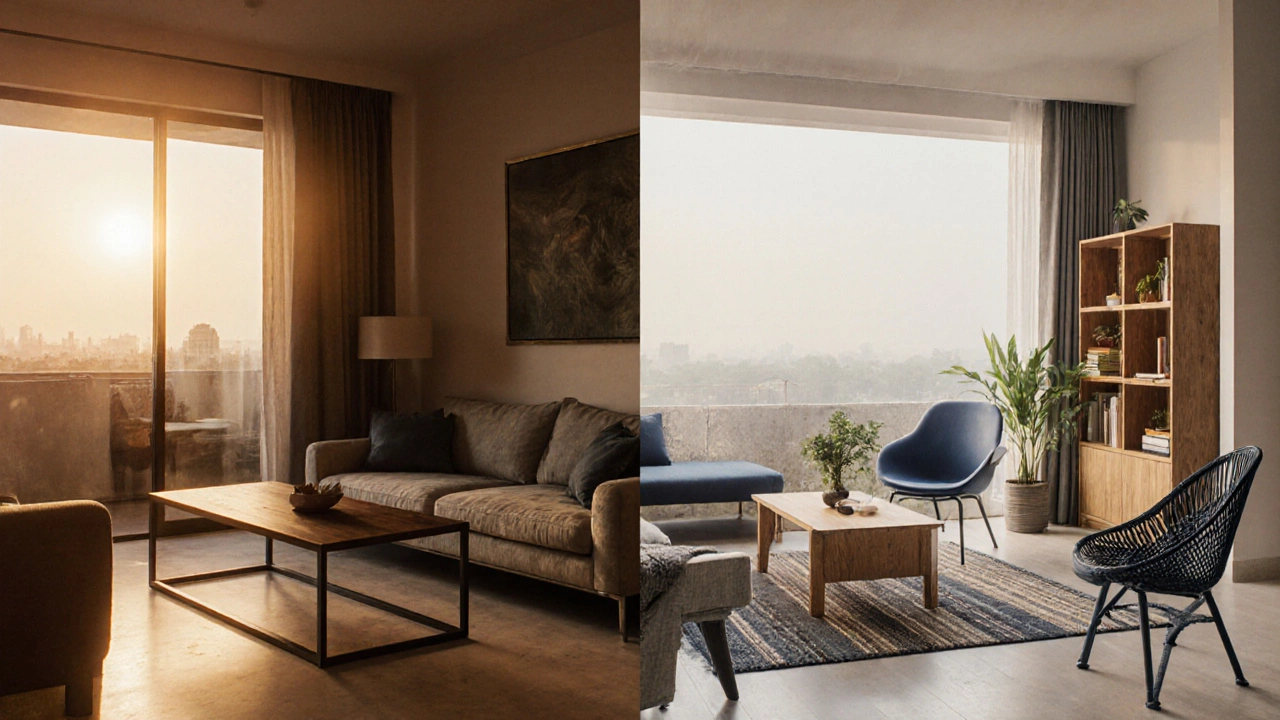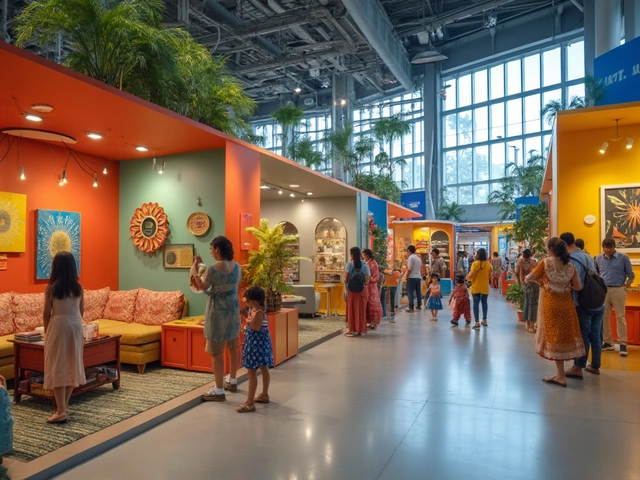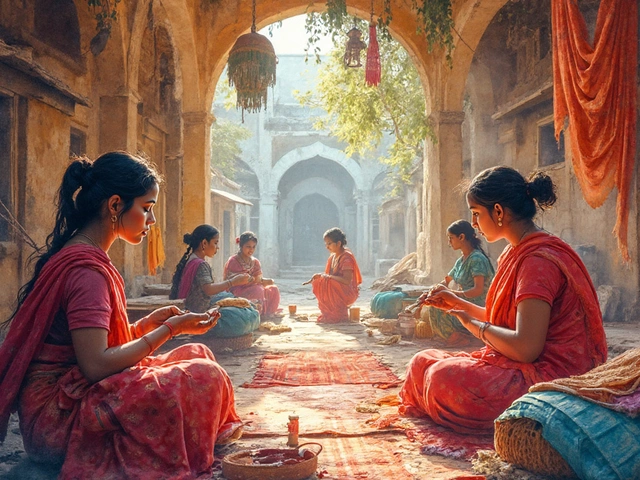Furniture Material Selector
Select Your Requirements
Recommended Materials
Choosing the best furniture material for your home or office in India can feel like a maze-heat, humidity, budget, and style all collide. This guide cuts through the noise, showing you which materials stand up to Indian conditions, where they shine, and how to keep them looking fresh for years.
Why Indian Climate Shapes Material Choices
India’s climate ranges from scorching summers in Delhi to monsoon‑soaked coastlines in Kerala. High humidity accelerates wood swelling, while temperature swings can warp plastics. Understanding these forces helps you avoid costly replacements later.
- Hot, dry zones: Materials that resist cracking, like teak or metal, perform well.
- Humid coastal areas: Choose moisture‑resistant options such as engineered wood or metal frames with powder‑coat finishes.
- Urban apartments: Space‑saving, lightweight pieces made from MDF or plastic can be practical, but watch for moisture exposure.
Major Materials Used in Indian Furniture
Below are the most common choices, each introduced with a concise definition that highlights its core attributes.
Teak wood is a dense hardwood native to Southeast Asia, prized for its natural oils that repel water and insects. It typically costs between INR 2,500-3,500 per board foot and lasts decades even in humid environments.
Sheesham wood (also known as Indian Rosewood) offers a rich grain pattern and moderate durability. Priced around INR 1,800-2,500 per board foot, it’s a popular choice for solid‑wood tables and wardrobes.
Mango wood is an eco‑friendly hardwood harvested from mango trees after fruit production. It’s lighter than teak, costs roughly INR 1,200-1,800 per board foot, and works well for casual, rustic furniture.
MDF (Medium‑Density Fiberboard) is an engineered wood product made from wood fibers bonded under heat and pressure. It’s cheap (≈ INR 50-80 per sqft) but prone to water damage, so it’s best for indoor, low‑moisture areas.
Plywood consists of thin wood veneers glued at alternating grain directions, giving it strength and resistance to warping. Indian plywood grades (MR, BWR) cost INR 120-200 per sqft and are a go‑to for cabinets and modular units.
Steel furniture employs cold‑rolled steel tubes, often powder‑coated to prevent rust. It’s robust, fire‑resistant, and priced around INR 300-500 per kg for frames, making it ideal for contemporary sofas and office desks.
Polypropylene plastic chairs and storage units are molded from a lightweight, UV‑stable polymer. Costs are low (≈ INR 40-70 per unit) and the material tolerates outdoor exposure, though it may feel less premium.
PU leather upholstery (polyurethane leather) mimics genuine leather at a fraction of the price (≈ INR 350-500 per sqft). It’s water‑resistant and easy to clean, but can crack under prolonged direct sunlight.
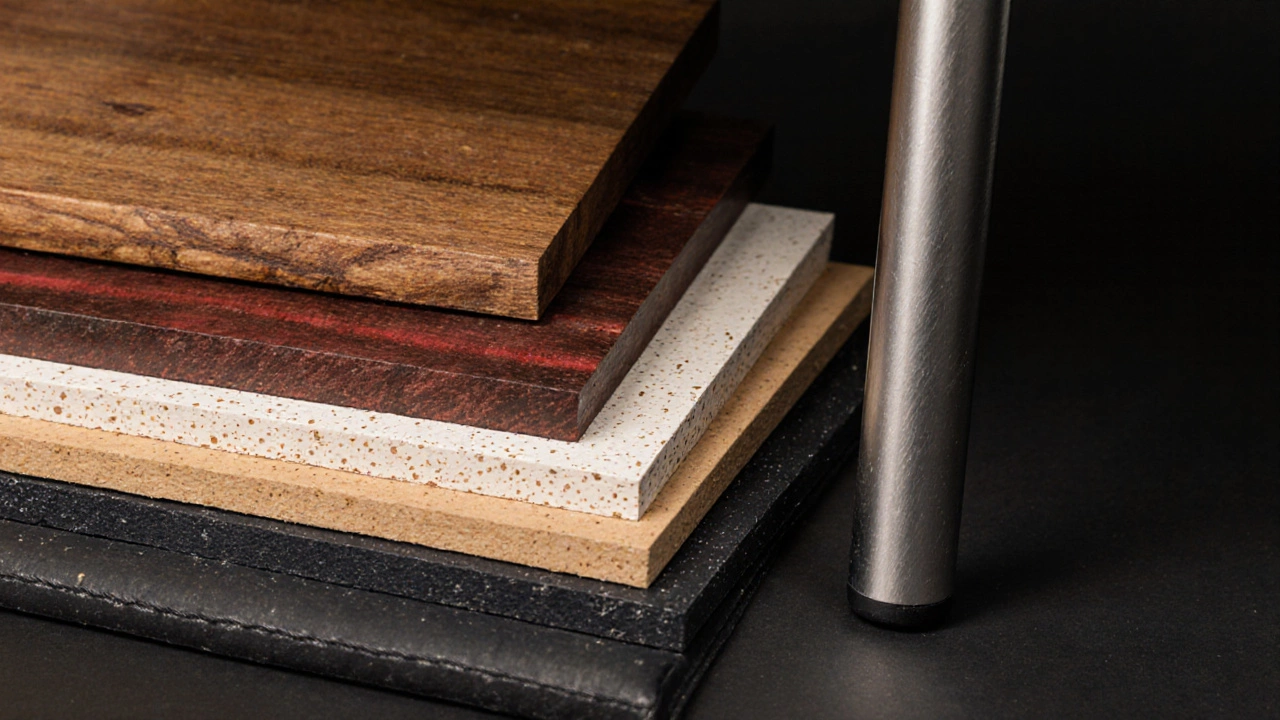
Comparison Table: Key Attributes at a Glance
| Material | Cost (per unit) | Durability | Maintenance | Best For |
|---|---|---|---|---|
| Teak | ₹2,500‑3,500/ft² | Excellent (30+years) | Annual oiling | High‑end indoor & patio |
| Sheesham | ₹1,800‑2,500/ft² | Good (15‑20years) | Wipe with dry cloth | Traditional Indian décor |
| Mango | ₹1,200‑1,800/ft² | Moderate (10‑15years) | Seal with varnish | Rustic, casual pieces |
| MDF | ₹50‑80/ft² | Poor in moisture | Use laminate or paint | Indoor cabinets, budget furniture |
| Plywood | ₹120‑200/ft² | Good (15‑20years) | Wipe with damp cloth | Modular kitchens, wardrobes |
| Steel | ₹300‑500/kg | Excellent (25+years) | Wipe with mild detergent | Contemporary, office, outdoor |
| Polypropylene | ₹40‑70/unit | Good (10‑12years) | Rinse with water | Patio chairs, storage |
| PU leather | ₹350‑500/ft² | Moderate (8‑12years) | Wipe with leather cleaner | Sofas, office chairs |
How to Pick the Right Material for Your Space
- Assess the environment - high humidity? Choose teak, steel, or powder‑coated metal.
- Set a realistic budget - if under ₹30,000 for a dining set, MDF or mango wood offers style without breaking the bank.
- Define usage intensity - heavy daily use favors steel or solid hardwood; occasional decorative pieces can be MDF.
- Consider aesthetics - warm grain looks (teak/sheesham) vs. sleek modern (steel, PU leather).
- Plan maintenance - if you dislike oiling, skip teak; opt for low‑maintenance metal or PU leather.
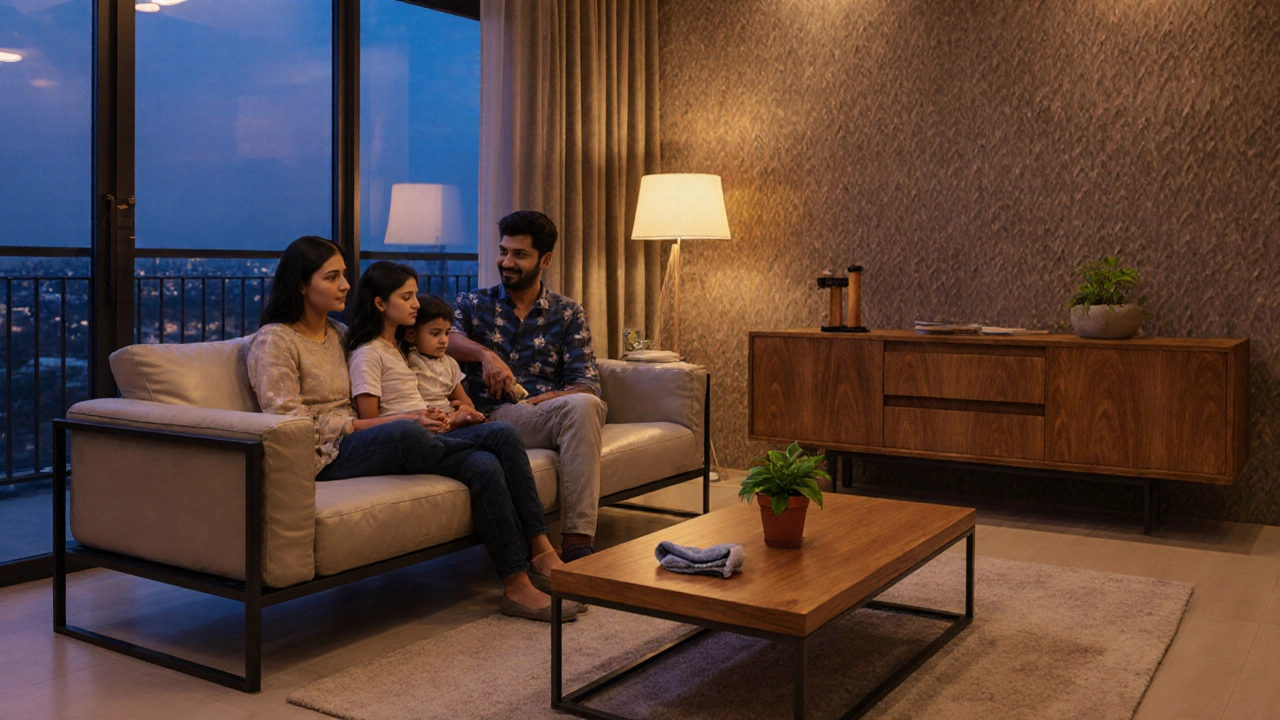
Cost‑Smart Strategies
Even on a tight budget, you can get durability without splurging:
- Mix materials - a steel frame sofa with PU leather cushions balances price and longevity.
- Buy locally sourced mango wood - it’s cheaper than imported teak and still strong enough for low‑traffic furniture.
- Look for bulk‑order discounts from Indian manufacturers; many offer 5‑10% off for orders over 5units.
- Consider semi‑finished pieces that you can finish yourself (e.g., raw plywood with a DIY varnish).
Maintenance Tips for Each Material
Extending the life of your furniture is mostly about routine care. Here’s a quick cheat‑sheet:
| Teak | Wipe with a soft cloth, oil once a year with teak oil to preserve color. |
| Sheesham | Dust regularly; apply a thin layer of natural oil every 2years. |
| Mango | Seal with polyurethane varnish; avoid direct sunlight to prevent fading. |
| MDF | Keep away from water; use edge banding to protect cut edges. |
| Plywood | Wipe with a damp cloth; reapply protective wax every 3years. |
| Steel | Clean with mild soap; inspect for scratches in the powder coat and touch up if needed. |
| Polypropylene | Rinse with water; avoid abrasive cleaners that can dull the surface. |
| PU leather | Use a leather‑specific cleaner; keep away from heat sources to stop cracking. |
Frequently Asked Questions
Which material lasts the longest in humid Indian homes?
Teak wood and steel frames are the top performers. Teak’s natural oils repel moisture, while steel’s powder‑coat finish prevents rust for decades.
Is MDF suitable for outdoor furniture?
Generally no. MDF absorbs water, swells, and loses structural integrity when exposed to rain or high humidity. Opt for teak, metal, or specially treated plastic for outdoor use.
Can I mix wood and metal in a single piece?
Absolutely. Modern Indian designers often pair a steel frame with a teak or mango wood tabletop, offering strength, sleek looks, and warmth together.
What’s the most budget‑friendly solid wood?
Mango wood is the cheapest Indian solid wood that still offers decent durability. It’s widely available and works well for casual dining sets.
How often should I oil teak furniture?
For indoor pieces, a thin coat once a year keeps the wood supple. Outdoor teak may need oiling every 6months, especially after heavy rain.
